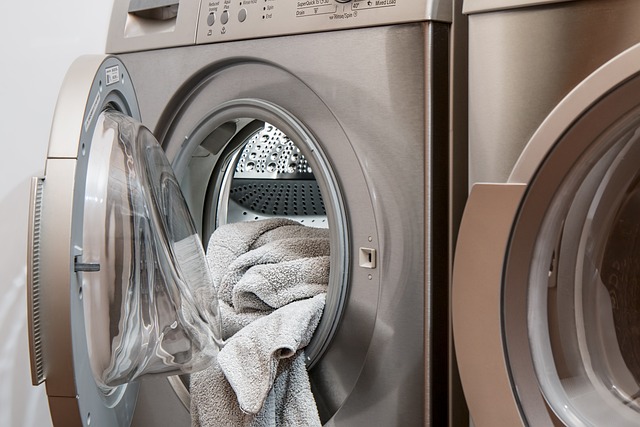Even though washing clothes only takes an hour or so per load, there are times when it feels like it takes all day. Use this article as a guide to better understand how long a washing machine takes to wash clothes to make laundry day feel more manageable.
Generally, the duration of Synthetics cycles can range from 1 hour 30 to 1 hour 45, the cotton washing cycle typically lasts between 1 hour 45 and 2 hours 30, the white cycles last between 1.5 and 3 hours, and the sport cycle last about 2 hours on average…
Although it can be annoying, washing machines now frequently have cycles that last a few hours each. The length of the cycle, however, will vary depending on the machine in question and the cycle you are using.
Please read on.
How Long Does a Washing Machine Take?
You can find the precise washing duration for each of the various modes in the table below.
Synthetics
Today’s synthetic cycles frequently operate at 40 degrees and have slow spin rates. The duration of these cycles can range from one hour thirty to one hour forty-five, with the average.
Cotton
For fabrics that require vigorous washing, like bed sheets or towels, cotton washing machine cycles are created. High water temperatures and a fast spin go hand in hand with this.
A cotton washing cycle typically lasts between 1 hour 45 and 2 hours 30.
Whites
If your machine does have a convenient special cycle designed specifically for washing white clothing, you might find that it is quite a lengthy cycle.
These cycles frequently last much longer, between 1.5 and 3 hours, to avoid using extremely high water temperatures to remove tough stains from white clothing.
Wool, Delicate & Handwash
Delicate cycles are by definition very gentle. When washing delicately, they typically use low temperatures and slow spin speeds. As a result, these are relatively brief cycles, with average sitting times of 45 to 1.5 hours.
Sport
Sportswear programs are ideal for synthetic clothing that has sweat on it, but they are not always ideal for clothing that has heavily soiled.
The long cycle times are excellent for removing sweat stains and odors from clothing, and the low operating temperatures protect the fibers from harm. These cycles last about two hours on average.
Quick Wash
The Quick Wash cycle typically takes between 15 and 40 minutes to complete, depending on the model and brand. It is typically chosen for small, lightly soiled loads. In order to quickly clean items, the Quick Wash Cycle uses shorter, more intense washing cycles. A highly soiled load that is overloaded or washed on Quick Wash may not get completely clean.

How Long Does a Normal Wash Cycle Take in a Top-load Washer?
Depending on the brand and model, a typical wash cycle in a top-load washing machine can take anywhere from 60 to 80 minutes to complete. Depending on the brand and model of your washer, the top-loading cycle times may vary slightly.
Suggested reading: Even though Vans shoes are built to withstand the abuse of skateparks, they occasionally need some tender loving care. Here’s the question, can you put vans in the washing machine?
How Long Does a Normal Wash Cycle Take in a Front-load Washer?
In order to complete a typical wash cycle, front-load washing machines can take anywhere from 60 to 80 minutes. Longer wash times can also be caused by tightly packed clothes, unbalanced loads, and too much suds.
Maytag® front-load washers help to take the effort out of cleaning with hard-working features like the Any wash cycle with a dual-temperature wash will have a stain-fighting performance boost when the Extra Power button is pressed.
How Long Does a Sanitize Cycle Take to Finish?
Between 90 and 120 minutes can pass during a Sanitize cycle. When you need thorough cleaning the most, Maytag washers with the Sanitize cycle eliminate 99.9% of household bacteria1 with the hottest water temperature available.
The kind of crocs you own will affect how you should wash them. Can you put crocs in the washing machine? To avoid damaging your crocs when washing them, you should first read this post.
Why Do Washing Cycles Take So Long?
Many washing machines now frequently have general cycles that last longer than two hours, if not closer to three for some models.
This change resulted from the need for manufacturers to make appliances that are ever more efficient and adhere to new efficiency regulations.
A washing machine cycle’s efficiency can be improved by lengthening it, which will use less water and energy overall.
Many machines will need to use significantly more water and energy to produce the same cleaning results if cycle times are reduced.
Therefore, despite the fact that many typical washing machine cycles will now take around two hours, the longer cycle time does result in cost savings for both water and electricity.
However, the cycle you choose will affect the precise amount of time the washing machine takes.
Wash Cycles
Wash cycles typically consist of several stages:
- Prewash: The lid locks, and the tub measures the volume and weight of the load. Water is added, and the clothes are gently stirred to evenly distribute the detergent. Pre-soaking will typically take place at this point if you chose that option.
- Wash: The clothes may be agitated for a little while and then allowed to “rest” so the detergent can do its work. Longer periods of agitation and soaking will be present during a heavy-duty wash cycle.
- Rinse: Clean water is sprayed over the clothes after the soapy water has been drained away. The washer will add clean water, spin the load to drain it, and then add clean water once more to help rinse away the detergent and soils. The washer spins less quickly during gentler wash cycles like Delicates. The washer may perform additional rinses during cycles made for heavier soils to ensure that the soils are entirely removed. This is the stage where an unbalanced load may cause the washer to stop and attempt to rebalance, lengthening cycle times.
- Final Spin: A final rinse might be added before the final spin, after which your washer speeds up to wring out the clothes before putting them in the dryer. The washer starts spinning at its fastest speed at this point. An unbalanced load can result in issues and slow down the process, just like during the Rinse stage.
How to Keep Cycles as Short as Possible?
The best thing you can do to guarantee that your laundry is clean and that your washer lasts as long as possible is to understand how to use and care for it properly. The owner’s manual for your model should be your first port of call if you are unhappy with how long your washing machine cycles are taking. Some manuals will inform you whether a certain option lengthens the cycle time or will list the number of rinses a cycle or soil level setting has.
In general…
- Cycle times can be prolonged by overusing detergent or by using non-HE detergent in a machine made for it. Additionally, your clothes might appear dirtier or even still dirty at the end of a cycle, and they might leave behind residue in your washer that can cause odors and mold growth. Nowadays, some washers, like Whirlpool Load and Go, come with detergent reservoirs that will automatically dispense the proper amount of detergent for the load. If not, pay closer attention to the directions on your HE detergent. Typically, two tablespoons of detergent, or the equivalent of a coffee scoop, are needed for each load.
- Cycle times can also be prolonged by unbalanced loads. This can happen due to overloading, mixing heavy and light items, an unleveled machine, or even underloading (although we don’t see this as frequently). When an unbalanced load is detected, your washer will pause the cycle while it tries to correct the issue. While front loaders slow down the spinning and then attempt to spin back up to full speed, top loaders usually do this by adding water to the tub to re-distribute the clothes. Correctly loading your washer will aid in avoiding this problem.
- Avoid these cycles and options if you want a fast wash cycle:
- Sanitize and heavy duty cycles: Sanitize cycles usually last for more than two hours! Cycles like “Whitest Whites” and other heavy duty cycles use hot water (more on that below). They may have extend the “soaking” periods in the cycle to let detergent penetrate the fabrics more deeply, as well as extended agitation and extra rinses. Similar cycles can easily last three hours.
- Hot water washes: The wash water is heated internally in the majority of mid-range washers today so that it is the proper temperature for the cycle and any settings you’ve chosen. In order to heat the water to the proper temperature, the washer might even pause the cycle. To lessen the workload on your washer (and to prevent your dishwasher from running too long), make sure your home’s hot water heater is set to 120 °F. Using more hot water won’t make your detergent work any better at cleaning, aside from killing germs (which is nice when it comes to sheets, towels, cloth diapers, and other items).
- High soil level selections typically mean your washer will fill, spin, and rinse the clothes more times than it would for a lower soil selection. Save the heavy soil option for heavy soils only; it won’t likely improve the performance of a typical load’s wash.
- options for additional prewashes, soaks, and rinses. Prewashing, soaking, or adding an additional rinse are options that should only be used on items that require it, just like the heavy soil option. Simply adding another rinse can extend the cycle time by 10-15 minutes. You’re probably using too much HE detergent or combining heavier-weight fabrics with lighter-weight ones if you’re using the extra rinse option to remove white detergent streaks from your clothes (I’m definitely guilty of this).
If you’ve ruled out these factors, there may be something wrong with your washer’s load sense system, the water inlet valve, or something else.
Consider a smart washer that can send you a notification to your smartphone when a cycle is finished if you detest waiting around for your laundry to finish! In addition, many mid-range washers have digital time remaining readouts that calculate the length of time the wash will take based on the options you choose and the load size.
(PS: To help ensure that these time remaining readouts are accurate, be sure to load your washer correctly to prevent overloading and the ensuing rebalancing! Your washer might be able to anticipate when the cycle will begin, but it won’t know if the load will become unbalanced.)
Conclusion on How Long Does a Washing Machine Take
Generally speaking, the duration of the synthetic cycle is between 1 hour 30 and 1 hour 45, the cotton washing cycle is between 1 hour 45 and 2 hours 30, the white cycle is between 1.5 and 3 hours, and the average exercise cycle is about 2 hours
We sincerely hope that this article has provided you with more knowledge about modern washing machines and tips for maintaining the efficiency of the wash-dry-fold cycle.
What features are you trying to find in a washing machine? Post a comment below; we’d love to hear from you.



